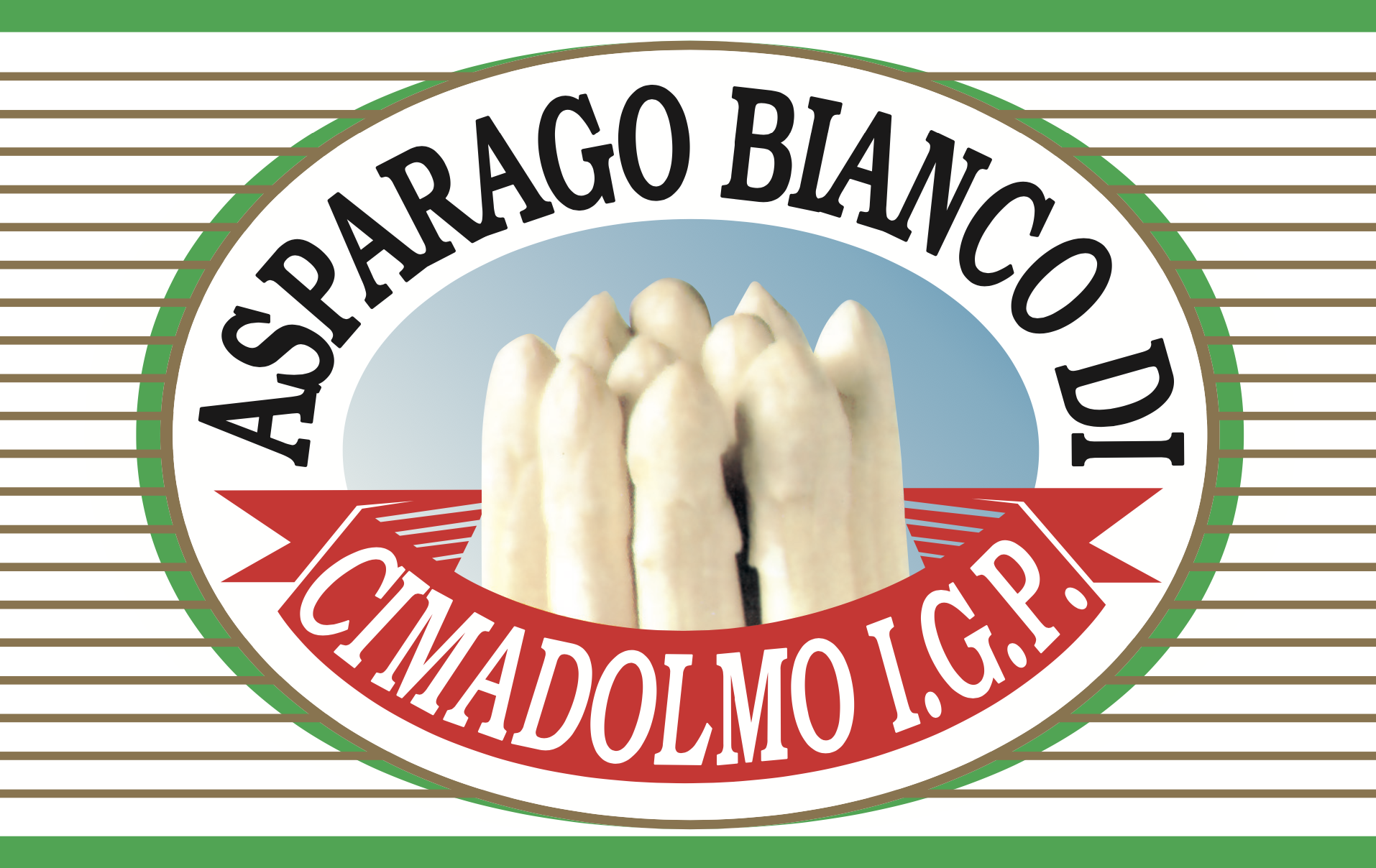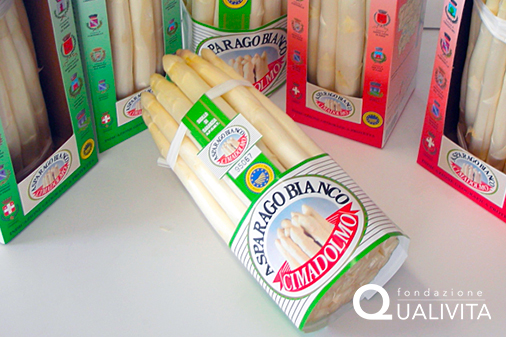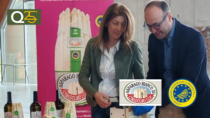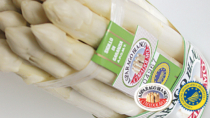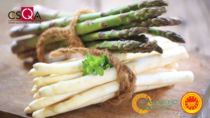Description
Asparago Bianco di Cimadolmo PGI is a fresh vegetable belonging to the species Asparagus officinalis L., deriving from the Precoce d’Argenteuil, Larac, Dariana, Cumulus, Darbella, Vittorio, Voltaire, and Zeno cultivars. Other cultivars may be present up to a maximum of 20%.
Production Area
The production area of Asparago Bianco di Cimadolmo PGI is within the municipalities of Cimadolmo, Brede di Piave, Fontanelle, Mareno di Piave, Maserada sul Piave, Oderzo, Ormelle, Ponte di Piave, San Polo di Piave, Santa Lucia di Piave and Vazzola, in the Province of Treviso, in the Veneto region.
Production Method
Asparago Bianco di Cimadolmo PGI is grown in sandy-limey alluvial soil, which is permeable and carefully drained. Planting takes place between March and April, using only the “legs” or disease-free plants. Asparagus or other Liliaceae can only be planted every 24 months, and they cannot be planted immediately after chard, potatoes, carrots or legumes. “Mulching” is mandatory, which involves the soil being covered with dark sheets made from a suitable material. This cultivation method serves to maintain the white colour of the asparagus, as the lack of light blocks natural photosynthesis. Covering the soil also impedes the growth of weeds. The turions are hand-picked during the coolest hours of the day when the light is less intense. The harvest starts from three years after they were planted. The first turions are harvested around the first days of March: it takes 15-20 days for those planted three years ago and 40-60 days for those planted four or more years ago. In any event, the harvest must be completed by May 30th. The asparagus, either in bunches or in bulk, are sent to the processing centre within 12 hours of the harvest, where they are refrigerated. The maximum permitted production is 7 tonnes per hectare.
Appearance and Flavour
Asparago Bianco di Cimadolmo PGI has long, pure white turions, which are tender, sweet and not fibrous. The turions should be intact, with a fresh smell, and not show any signs of bruising. They should be clean and not moist after having been washed or left in cold water in the refrigerator, and shouldn’t be empty, cracked, skinless, or split. The smell and taste are particularly delicate. This asparagus is rich in essential nutrients like calcium, phosphorus, magnesium and potassium, vitamins (including vitamin C), riboflavin and folic acid. It is low in calories and carbohydrates and an excellent source of protein.
History
White asparagus has been present in this area since ancient times, and both the Egyptians and Romans were familiar with it. Evidence of its cultivation can be found in the works of a few authors, such as I centodieci ricordi che formano il buon fattore di Villa, written by Giacomo Agostinetti in 1679, which today is kept in the archives of the Municipality of Cimadolmo. However, the diffusion of this crop in the Veneto region is actually quite recent, and can be traced back to less than half a century ago, when the breeding of silkworms in the area ceased and asparagus cultivation took its place, above all in Cimadolmo.
Gastronomy
Asparago Bianco di Cimadolmo PGI is highly perishable and can only be kept in the refrigerator for a few days. It can only be eaten cooked: it is a perfect side dish, although it is also well known for being served with eggs oil, butter and black pepper as a main course. It can also be used in starters and first courses, such as crêpes and risotto, or grated in omelettes. It is used in numerous recipes created by chefs in Treviso.
Marketing
The product is marketed as Asparago Bianco di Cimadolmo PGI, followed by one of the following categories: Extra or First. It is packed in bunches weighing between 500 g and 3 kg, or layered in individual boxes weighing a maximum of 5 kg. The label must bear the guarantee seal with the product logo and the Protected Geographical Indication symbol.
Distinctive Features
The temperate-humid climate, characterised by heavy rainfall in spring, enables Asparago Bianco di Cimadolmo PGI to grow at a very quick rate and gives the asparagus its distinctive qualities: tender, pure white and not fibrous.



